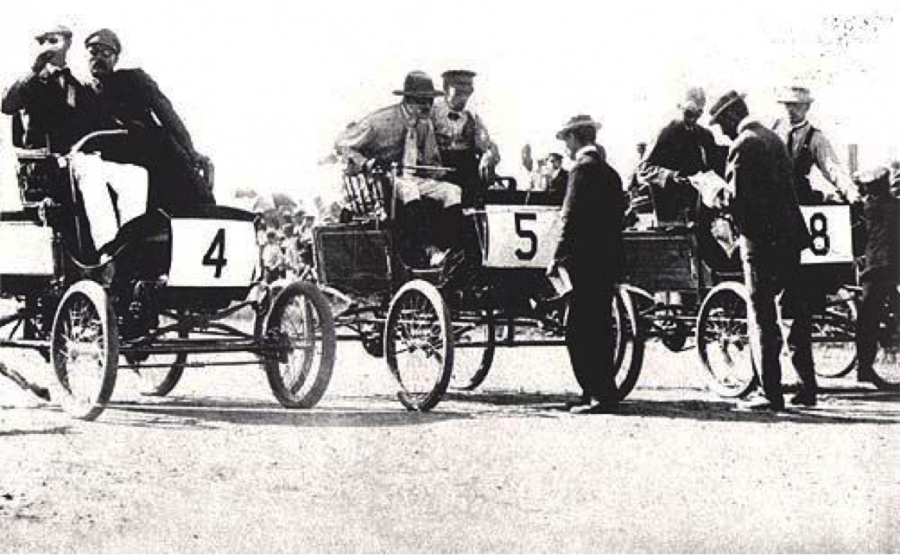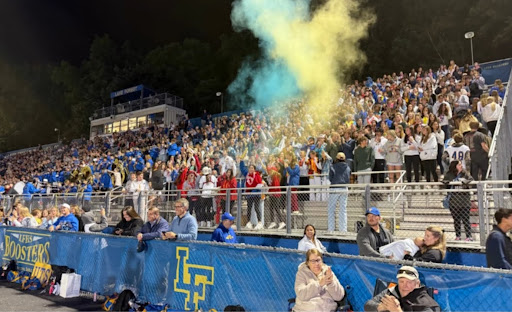Each week, In Between the Lines contributor Joe Thomas will recap an event that changed the landscape of sports history.
Auto racing has transformed into something fantastic. It attracts millions of fans of all ages around America who love the thrill of watching photo finishes, cars going unthinkably fast, and, of course, huge wrecks. We have seen legends come and go like Dale Earnhardt and Richard Petty who have won enough accolades to call themselves ambassadors of the sport of racing. Like racing, every sport has its location that it originated. For baseball it was Cooperstown, New York and for basketball it is Springfield, Massachusetts. On November 28th of 1895 , however, the first auto race in American history was held not to far from LFHS.
 Thirteen years before the Ford Model T was even invented, the Chicago Times-Herald announced that they would hold America’s first auto race with the award of $5,000 ($142,460 in today’s money). The race was originally planned to begin in Chicago and end in Milwaukee, but the roads in between the two cities were found to be to tough to ride on. Plan B was to have the race begin in Chicago and go all the way to Evanston and back for a grand total of 54 miles. As time went on and anticipation grew towards race day, news flooded the streets that it was going to be postponed from November 2nd to November 28th. Originally, 83 cars signed up for the race on the 2nd, but only a few cars showed up, setting race day back to Thanksgiving day of 1895.
Thirteen years before the Ford Model T was even invented, the Chicago Times-Herald announced that they would hold America’s first auto race with the award of $5,000 ($142,460 in today’s money). The race was originally planned to begin in Chicago and end in Milwaukee, but the roads in between the two cities were found to be to tough to ride on. Plan B was to have the race begin in Chicago and go all the way to Evanston and back for a grand total of 54 miles. As time went on and anticipation grew towards race day, news flooded the streets that it was going to be postponed from November 2nd to November 28th. Originally, 83 cars signed up for the race on the 2nd, but only a few cars showed up, setting race day back to Thanksgiving day of 1895.
On a cold, snowy morning in Chicago on November 28th, the first auto race in American history was held in conditions that would seem insanely dangerous if presented to modern day racers. The six new vehicles at the starting line would face unbearable conditions and a high chance of not finishing. The lineup of cars consisted of the Duryea, which was the first car to run on gasoline, two Benz automobiles, which were the first practical motor cars invented, two electric vehicles, and the car of H. Muller and Company. The weather conditions during the race carried a heavy toll early on some of the vehicles. Shortly into the race, the two electric cars’ batteries died making them forfeit from the race. It was not long after the two electric cars’ batteries died that the two Benz cars broke down, causing them to also forfeit from America’s first auto race. What was left in the race was the Duryea, which ran on gasoline, and the car of H. Muller and Company that was beginning to rapidly fall behind. As the day grew older, conditions became more and more unbearable. The Duryea car’s lead continued to grow throughout the day, which eventually resulted in a victory, finishing two hours in front of the Muller vehicle. The Duryea never broke over ten mph in its nine hour run, but regardless, Frank Duryea, the driver of the winning vehicle, became notorious for his victory in the first ever auto race in the United States.
It’s amazing to think that only 121 years ago in the first ever auto race, the speed of the fastest car was under 10 mph. Racing has came so far that in America’s most popular form of auto racing, Nascar, drivers don’t have much of a problem hitting speeds of over 200 mph. The first auto race in America that occurred less than an hour from our high school has now grown into one of America’s most popular sports. On November 28th of 1895, the sport of auto racing was brought to America and made history.







